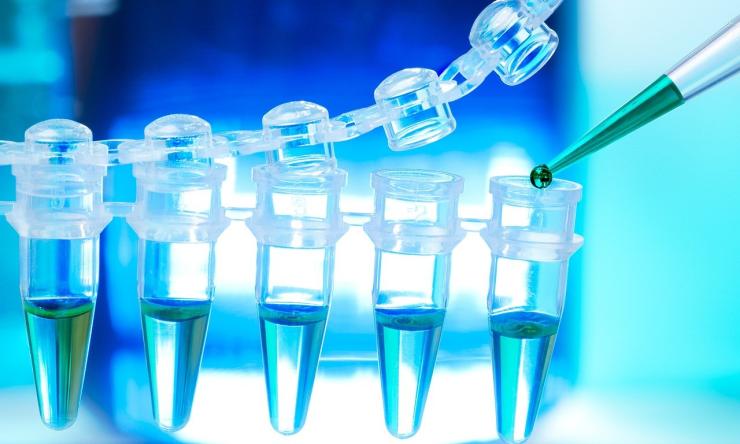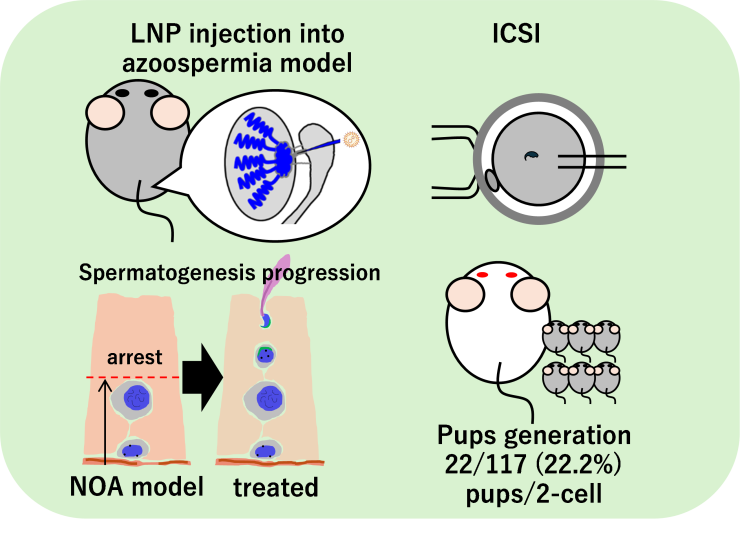Researchers restore fertility in mouse model of non-obstructive azoospermia
An international research team led by Baylor College of Medicine and The University of Osaka have found a way to resume sperm production, leading to healthy offspring in mouse models with non-obstructive azoospermia (NOA), a condition where sperm are not present due to a failure in sperm production.
The findings, published in Proceedings of the National Academy of Sciences, could point to a new way to therapeutically treat men and reverse their genetic infertility due to similar conditions.
When it comes to sperm production, the gene PDHA2 is required to complete meiosis, a cell division process that is essential for fertility. Men with genetic defects in meiosis-related genes, such as PDHA2, cannot produce mature sperm. While there are some treatment options such as surgical sperm retrieval or hormonal therapy, they are not effective if there are no viable mature sperm.
The current study led by Dr. Daisuke Mashiko and Dr. Masato Ikawa, assistant professor and professor, respectively, in the Institute of Microbial Diseases at the University of Osaka, along with Dr. Martin Matzuk, professor and chair of the Department of Pathology and Immunology at Baylor. They and their colleagues restored meiosis in a mouse model that mimicked NOA. They did this by developing a novel lipid nanoparticle (LNP)-based method to deliver Phda2 mRNA.
They used LNPs because these particles do not alter DNA as other delivery methods can, and in this case bypass the genetically mutant DNA and the meiosis block to produce the necessary PDHA2 protein in the immature sperm, allowing formation of the mature sperm.
To ensure that only sperm-producing cells were affected, researchers added miRNA target sequences, which help to control the expression of the PDHA2 protein only in the male germline. Once the PDHA2 protein expression was restored, meiosis resumed normally.
The research team found that sperm were functional after treatment and found that those Phda2 mutant mouse models treated went on to have healthy offspring. Whole-genome sequencing of the offspring confirmed the absence of large-scale genomic abnormalities.
“Our exciting results provide proof of concept for a safe and effective LNP-based mRNA therapy, offering a promising strategy to treat male infertility caused by spermatogenesis arrest,” Matzuk said. “These international collaborative studies were initiated a decade ago through Osaka University's International Collaborative Research Promotion Program between Professor Ikawa’s team at Osaka University and my research group at Baylor College of Medicine in Houston, Texas.”
Others who contributed to this research include Chihiro Emoria, Yuki Hatanakaa, Daisuke Motookaa, Chen Pana, and Yuki Kanedaa. Affiliations include the University of Osaka, the University of Tokyo and Baylor College of Medicine.
Specific funding for this research is from the Ministry of Education, Culture, Sports, Science and Technology/Japan Society for the Promotion of Science (JP21H05033, JP22H04922, JP23K20043, and JP25H01353); the Japan Science and Technology Agency (JPMJCR21N) the Japan Agency for Medical Research and Development (JP23jf0126001, JP23fa627002, and JP23fa627006); the Eunice Kennedy Shriver National Institute of Child Health and Human Development (R01HD088412); and the Master Plan Implementation Project promoted at University of Osaka.











 Credit
Credit